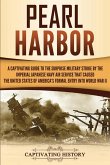This study analyzes the evolution of Seventh Air Force's joint command and control relationships as well as the development of joint operational procedures and doctrine in the Central Pacific during World War II. As this was arguably the most "joint" theater in World War II, there are many lessons about the challenges of joint command and control and the development of joint combat procedures that are relevant to contemporary airmen. The Seventh Air Force was established in the aftermath of the attack on Pearl Harbor. It was initially a defensive and training oriented command-protecting Hawaii from a possible attack by the Japanese and training replacement crews for units in the South Pacific. However, in the summer of 1943, the Seventh Air Force became an offensive, mobile combat command that, along with each of the other services, played a major role in the island-hopping campaign of World War II.
Hinweis: Dieser Artikel kann nur an eine deutsche Lieferadresse ausgeliefert werden.
Hinweis: Dieser Artikel kann nur an eine deutsche Lieferadresse ausgeliefert werden.








